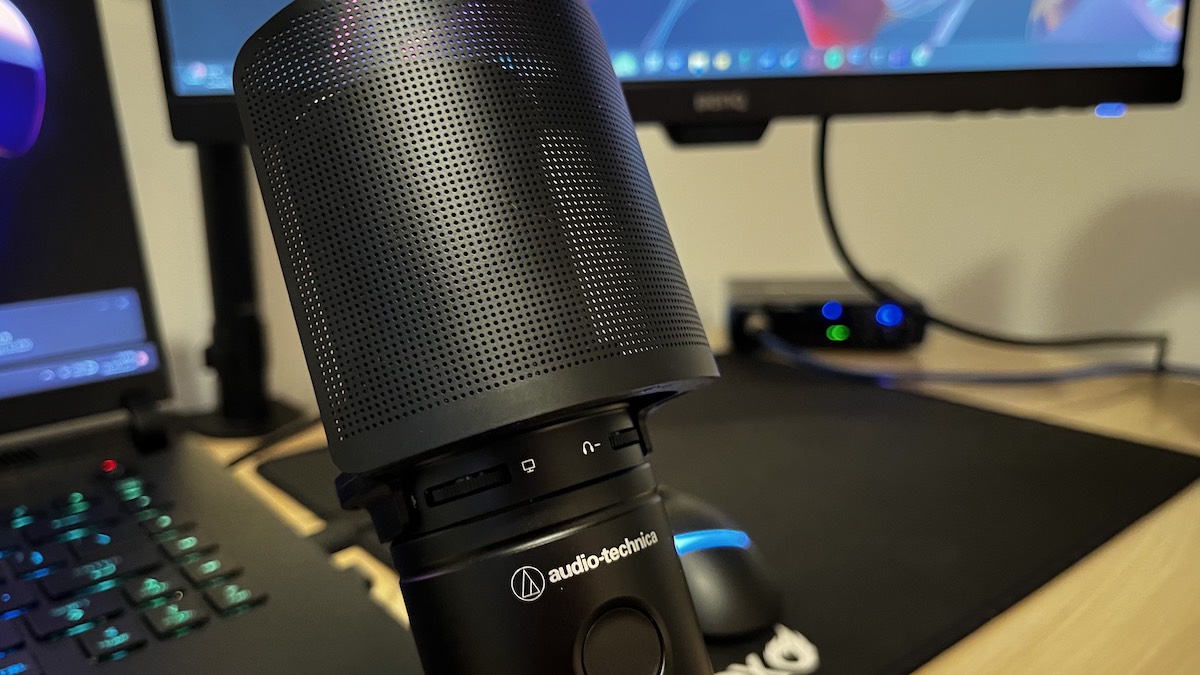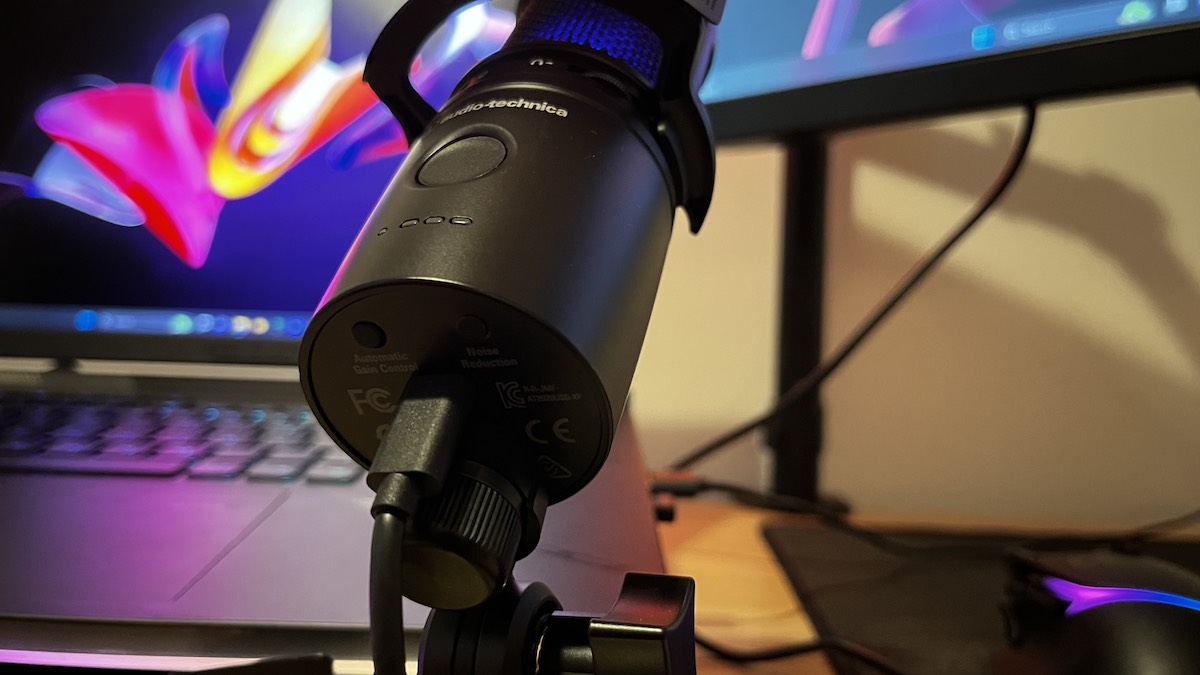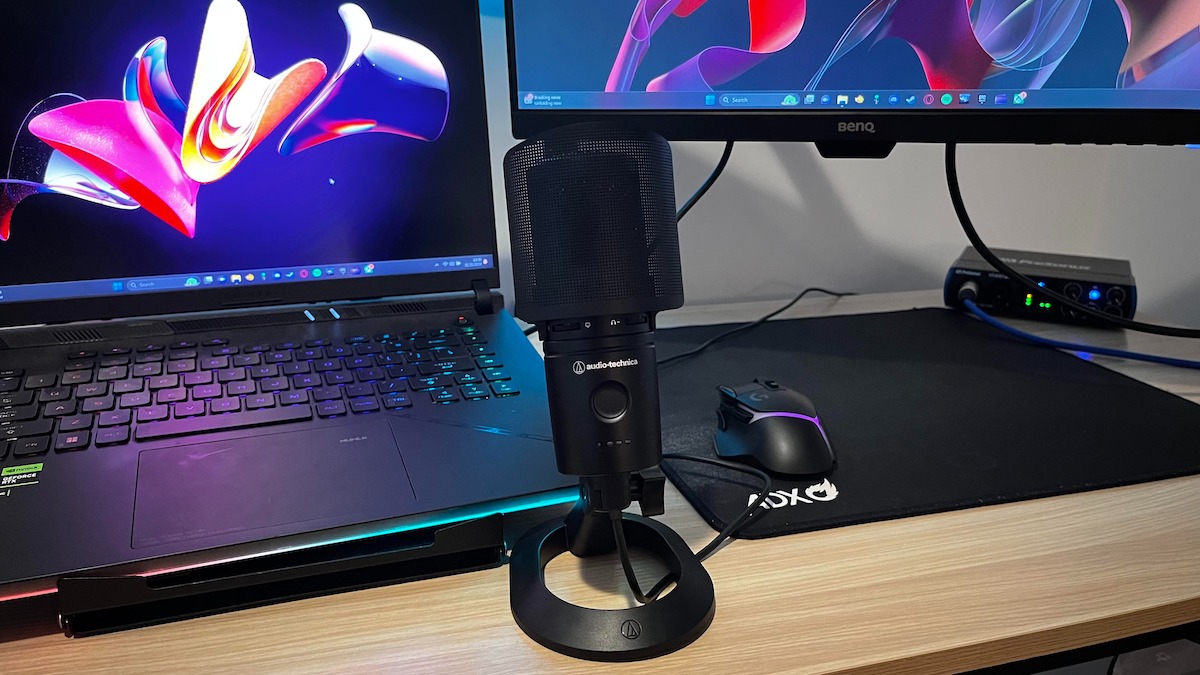MusicRadar Verdict
A well-made, nicely designed mic which will elevate your streaming and speech game. It does have some minor niggles, but as an overall package, it’s a definite contender.
Pros
- +
High-quality sound
- +
Included pop filter
- +
Easy to set up
Cons
- -
Easy to accidentally mute yourself
- -
There are more versatile options at this price
MusicRadar's got your back
Audio-Technica AT2020USB-XP review: What is it?
Audio-Technica is not shy when it comes to releasing new microphones. Here we’ve got the Audio-Technica AT2020USB-XP, a cardioid USB-C condenser microphone which sits toward the bottom of the range in terms of spec, yet has a few nifty features which elevate it above some of the truly budget mics in the line-up. For a start, the AT2020USB-XP is a derivative of the existing AT2020USB, which is a quality budget USB microphone for beginners. Where the XP differs is in the fact it adds automatic gain control and built-in active noise reduction, mitigating some of those potential problems you’ll know if you record or stream regularly.
These new features make for a microphone with more in the way of on-mic control than you’ll find elsewhere. To the top of the chassis, you’ll find slider controls under the grille for blending microphone and computer audio from the headphones, along with a headphone volume slider. In the centre is a capacitive touch button for muting the mic - more on this later - and then underneath you’ll find two buttons for activating the automatic gain control and the noise reduction. This comes in 3 levels, from a light touch for fairly quiet situations to more robust levels of noise suppression which would come in handy in louder environments. You can see which level of noise reduction is active thanks to three small LEDs on the face of the unit.
The XP also comes with a weighty desk stand, which is perfectly usable and fairly low profile, and a removable pop filter which snaps onto the front of the unit. Inside the grille, there are LED lights which offer a couple of functions, indicating when the mic is muted with a red light, and a constant cool blue when it’s functioning normally. So how does the Audio-Technica AT2020USB-XP perform in the real world? Let’s take a look.
Audio-Technica AT2020USB-XP review: Performance & verdict

To put the AT2020USB-XP through its paces, I conducted a few different tests which would mirror real-world situations in which you might use it. With it being one of the more affordable mics in the category, it’s reasonable to assume the target user would be using it for speech applications, be that streaming, video calls or voiceover work. However, writing for a site called MusicRadar means we’re also interested in how it performs for studio recording purposes, so I tested a few different approaches here too.
Setup of the XP was as easy as you’d expect - simply plug in the mic via the USB-C connection and you’re good to go. I tested it on both Windows and MacOS and found it equally as straightforward on both operating systems.
Across the board, the AT2020USB-XP performed well. For speech work, the 24-bit, 192kHz resolution meant recordings were clear and captured plenty of detail. The onboard noise suppression did a great job at dulling the white noise coming from a fan heater in the room I used, and having three levels of suppression meant there was plenty available when traffic outside the window got a bit heavier. I found the noise suppression didn’t take too much away from the finished recordings either, and reduced - or completely removed - the need for my usual post-production processing in Adobe Audition.

To test the mic’s musical capabilities, I recorded a few takes using the Taylor Academy 12e-N I was also testing. The results were transparent and clear, with a low noise floor, allowing the Taylor’s naturally mellow sound to shine. To take things a step further, I recorded the Taylor into the AT2020USB-XP, and then onto one of the tape tracks on the Teenage Engineering OP-1 Field via USB-C. I can see how this portability and high-quality sound would make for a formidable travelling studio setup.
Want all the hottest music and gear news, reviews, deals, features and more, direct to your inbox? Sign up here.
There were a couple of minor issues to point out. While the AT2020USB-XP would undoubtedly make a superb mic for elevating your speech in vlogs, on streams and in video calls, I did find the capacitive mute button to be slightly… annoying. It’s extremely sensitive, so even lightly brushing it with my jacket sleeve caused it to mute once or twice. Honestly, I’d have preferred a tactile button here. The fact the built-in LED light changes colour to let you know you’re muted is helpful but in this context, capacitive controls feel like the solution to a problem nobody had raised.
I also wasn’t keen on how the XP does not have any form of onboard manual gain control, favouring instead a switchable automatic gain button on the bottom of the mic. While this wasn’t a major problem, it did take away a degree of control I’d prefer to at least have the option for. In practice, however, unless you regularly switch from whispering to shouting then what’s on offer should work admirably.

In its favour, the XP would make an ideal microphone for voice-over work, for example, provided it was used in conjunction with an acoustic booth. Without that, I did find the cardioid pickup was slightly broader than I’d like, especially compared to the Shure MV7, for example, which delivered much more focused results. That mic does, however, also deliver a price tag of almost double the AT2020USB-XP, so a less premium end result was to be expected. The XP was certainly as good as other mics within the same price bracket though, such as the Rode NT-USB. The single cardioid polar pattern does preclude it from being compared to mics like the Blue Yeti though, so if the versatility you get from having different polar patterns is required then there are better options.
Overall, however, there’s a lot to like here. Audio-Technica’s USB mics are - on the whole - a victory for good quality design and build, with enough in the way of useful features and superb audio performance to make them a solid recommendation. Whether it has enough versatility, in a market where there’s lots of competition, will be for you to decide. For us, it’s a worthy addition to the conversation and definitely warrants your consideration.
Audio-Technica AT2020USB-XP review: Hands-on demos
B&H Photo Video Pro Audio
Podcastage

Creators Village
Audio-Technica AT2020USB-XP review: Specifications
- Type: Condenser
- Sample rate: Up to 192kHz
- Bit depth: 16-bit/24-bit
- Frequency range: 20Hz to 20kHz
- Polar pattern: Cardioid
- Connectivity: USB-C
- Contact: Audio-Technica
Chris Corfield is a journalist with over 12 years of experience writing for some of the music world's biggest brands including Orange Amplification, MusicRadar, Guitar World, Total Guitar and Dawsons Music. Chris loves getting nerdy about everything from guitar and bass gear, to synths, microphones, DJ gear and music production hardware.



